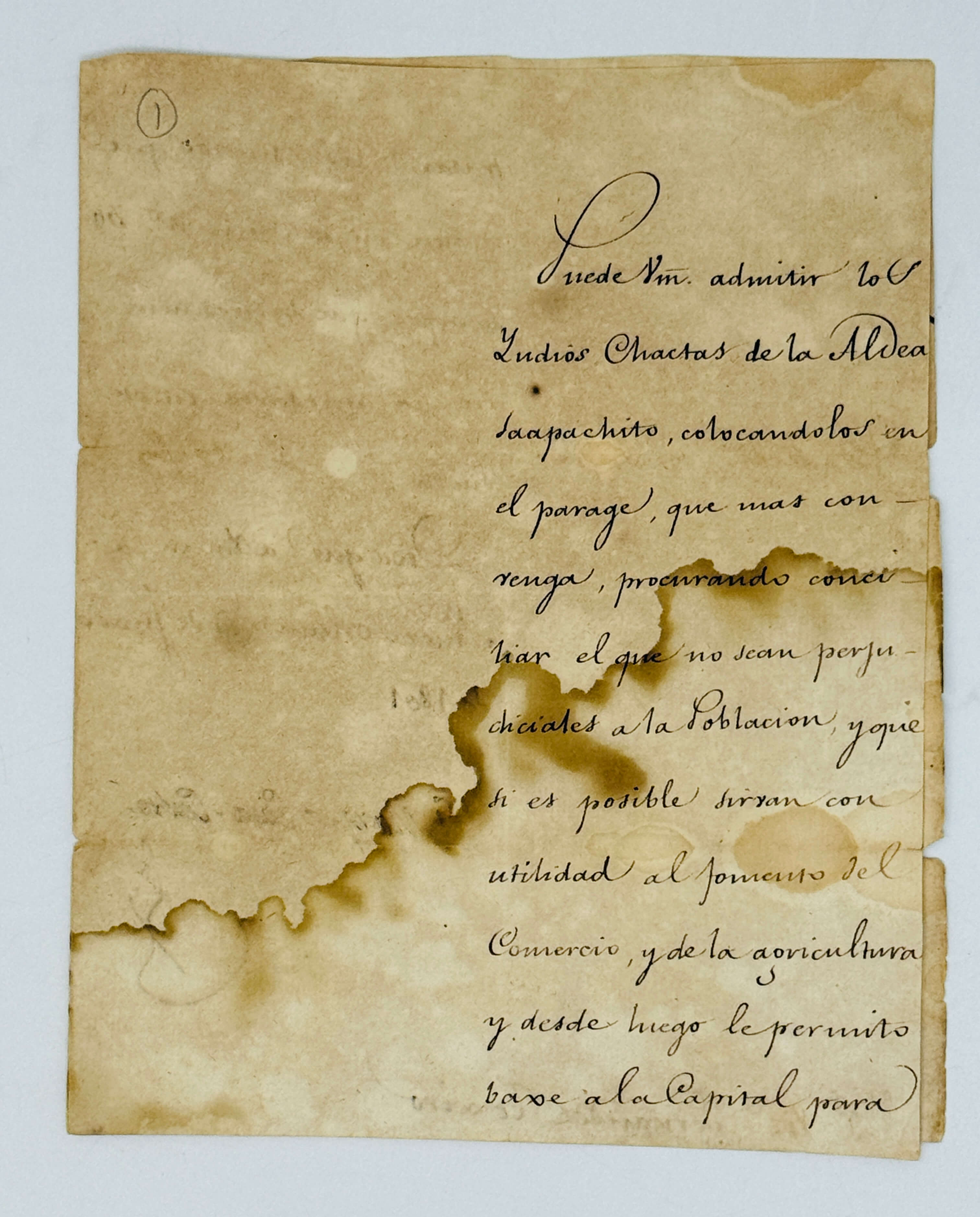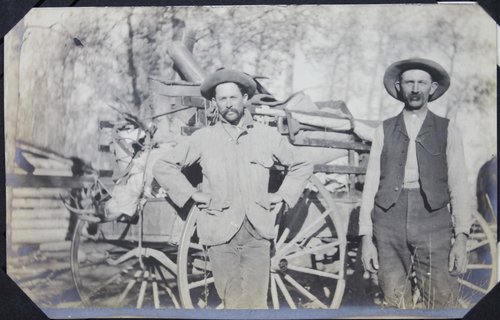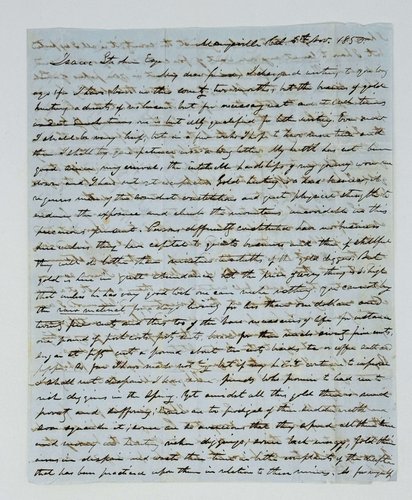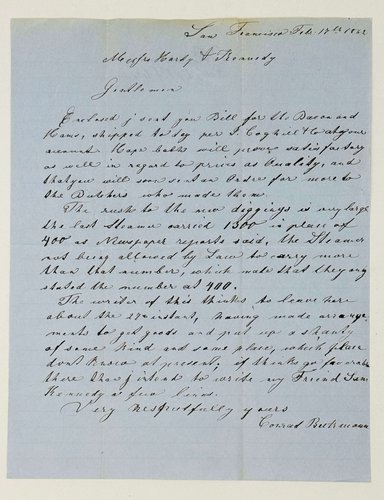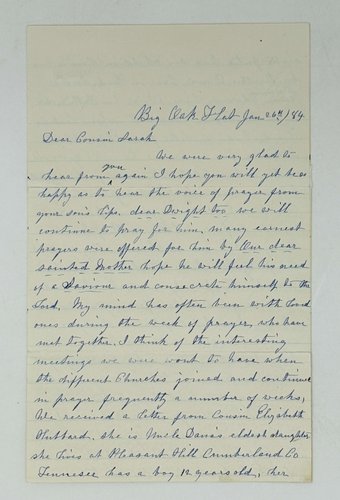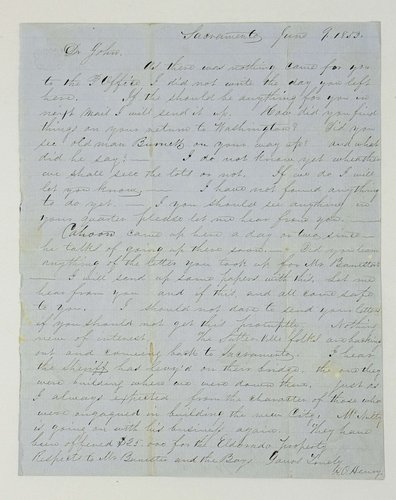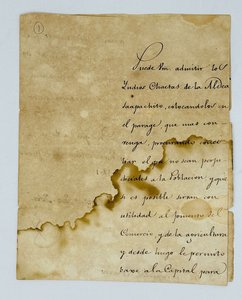
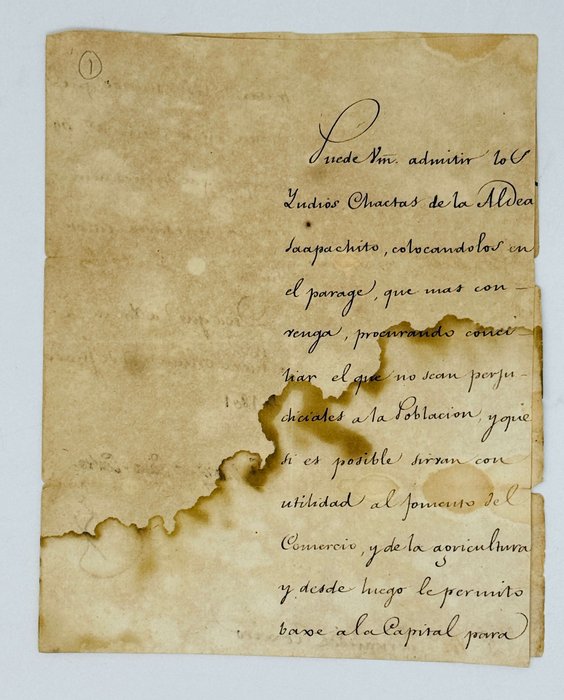
#MA8
1801
A small Octavo bifolium (ca. 19,5x15,5 cm or 7 ¾ x 6 in). 2 pp. Brown ink laid paper; docketed on verso of the second leaf. Foldmarks, paper age-toned and with water stains on the lower margin; several minor splits on fold; overall a very good document written in a legible hand.
Historically significant original autograph letter signed by Sebastian Calvo de la Puerta, 1st Marquess of Casa Calvo, Governor of Spanish Louisiana in 1799-1801. A Spanish military officer, he participated in the Mobile Campaign of the Anglo-Spanish War of 1779-83 (a part of the American Revolutionary War), the capture of Fort-Dauphin (Saint-Dominque, modern-day Haiti) during the Haitian Revolution (1794) and was present during the official transfer of Louisiana to the French in 1803. “In 1805-06 he led an expedition with Nicolas de Finiels into western Louisiana and Texas. His analysis of mission and presidial records at Nacogdoches and survey of the jurisdiction of Los Adaes convinced him of the just claims of Spain to territory as far east as Arroyo Hondo, which formed the boundary between Louisiana and Texas” (see more).
The letter is addressed to a Spanish military officer, Vicente Fernandez Texeiro (Tejeiro), who had arrived in Louisiana as a youth and served in the Louisiana Infantry Regiment (Din, G.C. “For Defense of Country and the Glory of Arms”: Army Officers in Spanish Louisiana, 1766-1803// Louisiana History: The Journal of the Louisiana Historical Association. Vol. 43, No. 1 (winter, 2002), p. 18; Holmes, J.D.L. Educational Opportunities in Spanish West Florida, 1781-1821// Florida Historical Quarterly. 1981. Vol. 60, No. 1, p. 83). At the time when the letter was written, Texeiro served as the Commandant of the Ouachita Post, founded in 1785 in the Ouachita River valley in modern-day northeastern Louisiana. Also known as Fort Miro, the post became the nucleus of the modern-day city of Monroe, the seat of Ouachita Parish (La.).
The letter concerns the arrival and settlement of “Indios Chactas de la Aldea Saapachito” near Texeiro’s post – most likely, Choctaw Apache people, who migrated to Spanish Louisiana in the late 18th century and today comprise “the second-largest American Indian tribe within Louisiana” (see more). Casa Calvo instructs Texeiro to “admit [them and place] <…> in the most convenient place, trying to reach an agreement that they are not harmful to the Population, and that if possible they serve usefully to promote Commerce and agriculture...” [in translation]. Apparently, the letter relates to the continuing dispute about trading rights in the Ouachita Valley, which had been previously fully granted to Felipe Enrique Neri, Baron de Bastrop, the founder of the Spanish colony in the area. “Spanish officials had granted the baron de Bastrop a complete trading monopoly in the area, which Indian and American traders often ignored. When groups of Choctaws and American traders arrived at Fort Miro hoping to exchange their goods for furs, Tejeiro rebuffed them and announced they had no right to trade in the area since all rights were held by Bastrop. When they refused to disperse, Tejeiro threatened military action against them” (Harvey, G.E. Historic Ouachita Parish: An Illustrated History. San Antonio, Texas: Historical Publishing Network, 2007, p. 9).
Overall an important original historical source on the history of interactions between colonial authorities and Native Americans in Spanish Louisiana. Another manuscript by Marquis de Casa Calvo, dating back to the same period and “concerning official matters, particularly relations with the Native Americans,” is stored in the Special Collections of the Libraries of Washington University in St. Louis (see more).
The text of the letter: “Puede [usted?] admitir los Indios Chactas de la Aldea Saapachito, colocandolos en el parage, que mas convenga, procurando conciliar en que no sean perjudiciales a la Poblaction, y que si es posible sirvan con utilidad al fomento del Comercio, y de la agricultura y desde luego le permito baje a la Capital para tratar de los asuntos que indica en su oficio No. 30 siempre que su presencia no sea necesaria en ex Puesto.
Dios que a vm. [… ?] a Nueva Orleans, 11 de Junio de 1801. El Marq. De Casa-Calvo.
Sr. Gr. Vizte. Fernandez Texeiro.”

